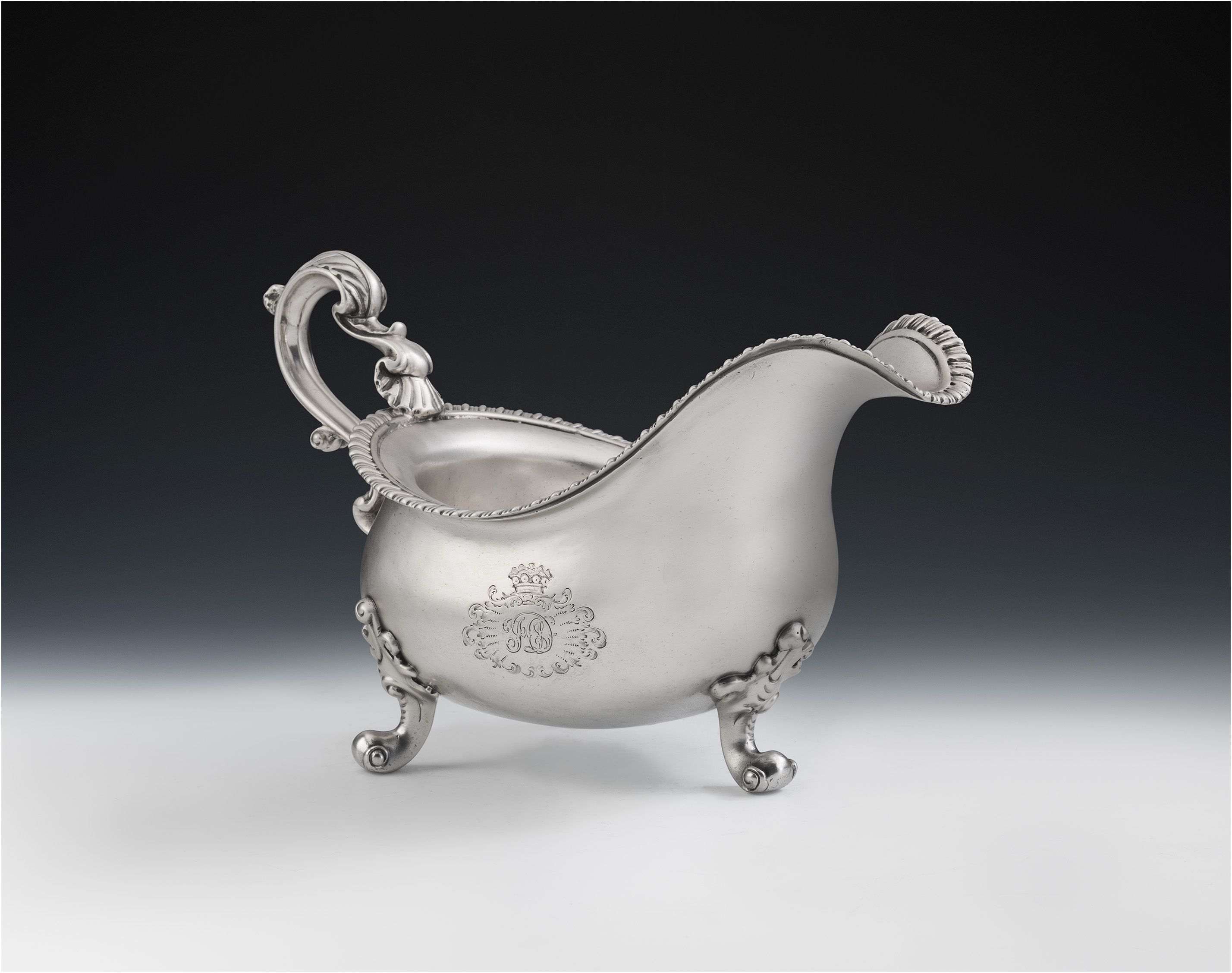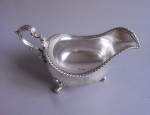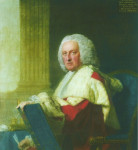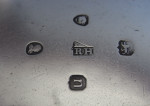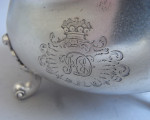- Home
- British Silver 1760-1830
- A very rare George IV Sauceboat Argyle made in London in 1828 by Robert Hennell II.
A very rare George IV Sauceboat Argyle made in London in 1828 by Robert Hennell II.
A very rare George IV Sauceboat Argyle made in London in 1828 by Robert Hennell II.
375452
This is the first time we have ever seen an Argyle being modelled as a sauceboat and we have shown it to a number of our colleagues in the antique silver trade and they feel, as we do, that it may be one of only a handful made, if not a "One off". The Argyle stands on three very unusual ribbed scroll feet, which are attached to the main body with cast Rococo mouldings. The large main body has a baluster, elongated, form and rises to a gadrooned rim. The scroll handle is decorated with leaf capping and displays acanthus foliage mouldings where it is attached to the main body. The Argyle has an inner skin, and there is a cavity between the inner and outer walls, so that the hinged section at the back can be opened and the cavity filled with hot water to keep the vessel very hot and therefore the sauce hot and thin. The side of the Argyle is engraved with a set of contemporary script initials, with the Coronet of a Baron above. This is all surrounded by a very unusual cartouche of feathery scrolls. This piece is in quite excellent condition and is fully marked on the base and inside the bowl. The cover, where the hot water would have been placed, is also marked with the sterling mark. This piece is of an exceptional weight, gauge and colour.
Argyles are generally accepted to have been containers for gravy or sauce, the design incorporating some form of heat preserving element. The credit for inventing these pieces goes to the 3rd Duke of Argyll, as he and his Duchess became tired of their sauces arriving cold at the dining table at Inveraray Castle. Their greatest period of popularity was from 1765 - 1825. Argyles are usually modelled as small teapots and to find one designed as a sauceboat is especially rare. We are certain that a very small number exist and they would have been extremely difficult to make. A picture of the Duke and Inveraray Castle are shown.
The work of Robert Hennell II is not common and, as you may know, was the nephew of Robert Hennell I, whom he was apprenticed to. He had workshops at 3 Lancaster Court, The Strand, when this piece was made. He must have been well thought of at Goldsmith's Hall as he was asked to make the Coffin Plate of King George III in 1820.
Height: 7 inches, 17.5 cm.
Length, handle to spout: 9.25 inches, 23.13 cm.
Width: 5 inches, 12.5 cm.
Weight: 25oz.
Thank you for your enquiry.
We will get back to you soon.
Please create wishlist to add this item to
RELATED ITEMS

